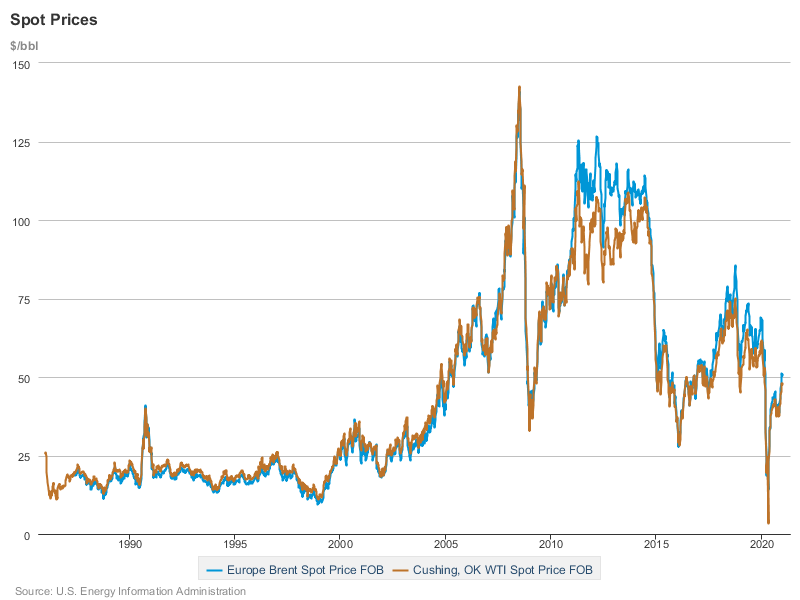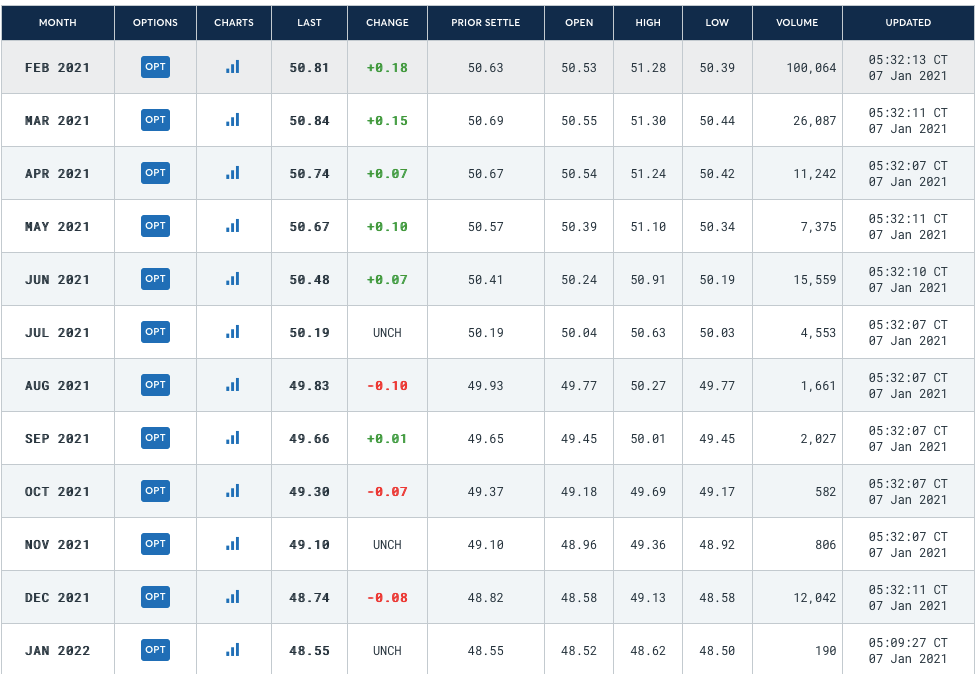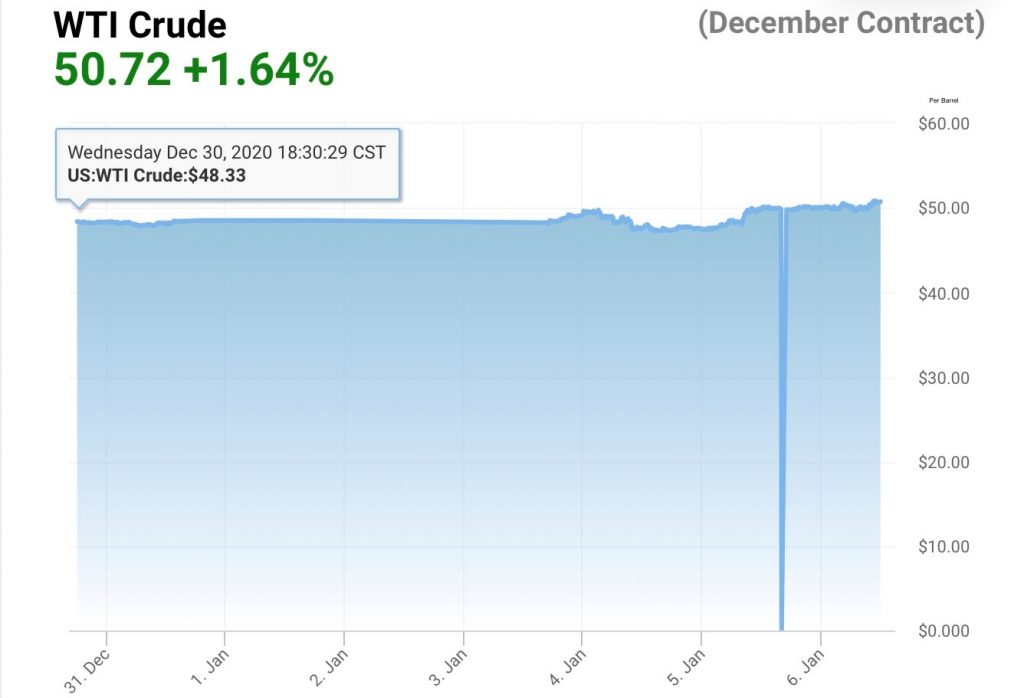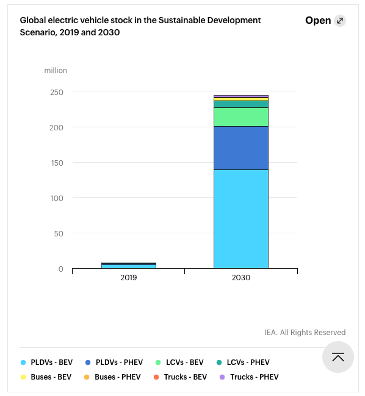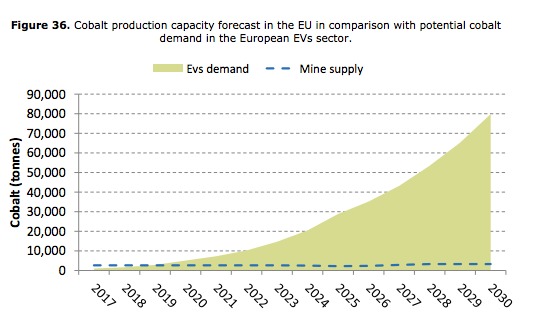Price movement, demand & supply analysis
We can see on the graph above that the price of Natural traded on the Henry hub benchmark was traded at 2.77 $ per Million BTu on the 5th of January 2021. As expected due to the high seasonality of this commodity, the price is increasing during the winter period where the household consumption is at its highest. Moreover, the worldwide demand for LNG on the Asian market is skyrocketing this year due to an intense cold-weather. However, even if the prices are increasing over the winter period due to an increase of the worldwide demand, the prices tend to converge and decrease within this global market because technological improvement (fracking) have attracted more and more players thus decreasing the production cost of this commodity.
Futures:
The coupled cost decline and regional shifts in demand and supply regarding LNG is the main driver for a strong forecast growth in this market. Liquefaction of natural gas has been around for over a hundred years but technological improvements and new energy consumption trends have transformed the market. China and Europe will continue to experience increasing deficits in their natural gas production whereas North America will show a strong gas surplus resulting in growing LNG exports around the world. Another aspect of LNG is that global liquefaction and regasification capacity will improve and grow together more than the double of today’s levels. Furthermore, due to increasing average shipping distance, tankers transporting LNG will increase their gas transport market share and tonne-miles shipping is expected to quadruple.
A therm (thm) equals 100’000 British thermal units (Btu).
Here the main change and point of observation is the increase in prices for future deliveries between February 2021 and February 2022. Indeed, recent important increases in demand due to cold snap, especially in Asia where we find the three biggest liquefied natural gas world importers, have led to a significant appreciation of short-mid term LNG prices traded as of 6th January 2021. But on a longer term, prices converge again on a lower basis.
On the previous graph, we can observe the evolution of gas exports by destination from Australia. The main part of the Australia LNG is exported to those following three countries: China, Japan and South Korea. According to the other graph we can see that Australia is going to surpass Qatar as the world’s largest liquefied natural gas exporter. This is mainly due to the fact that Australia’s newly commissioned projects ramp up and operate at full capacity (Wheatstone, Ichthys and Prelude floating LNG projects). Another interesting aspect is concerning the increase of export from the U.S which is expecting to be the country leader by 2025. Five projects are under construction totaling 47.8 MMtpa of liquefaction capacity. More than 30 additional LNG export projects have been proposed for the development of LNG export.
Recommendation:
Since for this coming winter market is expected to go in backwardation for the coming months with the analysis made by NGSA, we recommend selling now and do not store the commodity. In addition, as we are in the second wave of the COVID-19 LNG market is becoming uncertain as every commodity we can only plan for the coming month.
Bibliography
Henry Hub Natural Gas Spot Price, [no date]. [online]. [Viewed 7 January 2021]. Available from: https://ycharts.com/indicators/henry_hub_natural_gas_spot_price
Asia LNG Prices Skyrocket as Buyers Scramble for Supplies Amid Cold Snap, Power Shortages, 2021. Natural Gas Intelligence [online]. [Viewed 7 January 2021]. Available from: https://www.naturalgasintel.com/asia-lng-prices-skyrocket-as-buyers-scramble-for-supplies-amid-cold-snap-power-shortages/
U.S. Energy Information Administration (EIA), [no date]. [online]. [Viewed 7 January 2021]. Available from: https://www.eia.gov/naturalgas/weekly/#tabs-supply-3
LNG supply and demand, [no date]. [online]. [Viewed 7 January 2021]. Available from: https://eto.dnvgl.com/2019/lng-supply-and-demand
UK Natural Gas Futures Curve, [no date]. ERCE [online]. [Viewed 7 January 2021]. Available from: https://www.erce.energy/graph/uk-natural-gas-futures-curve/
LNG exports for selected countries, 2015-2025 – Charts – Data & Statistics, [Viewed 7 January 2021]. IEA [online]. [Viewed 7 January 2021]. Available from: https://www.iea.org/data-and-statistics/charts/lng-exports-for-selected-countries-2015-2025
Australia Exports By Country, . [online]. [Viewed 7 January 2021]. Available from: https://tradingeconomics.com/australia/exports-by-country


